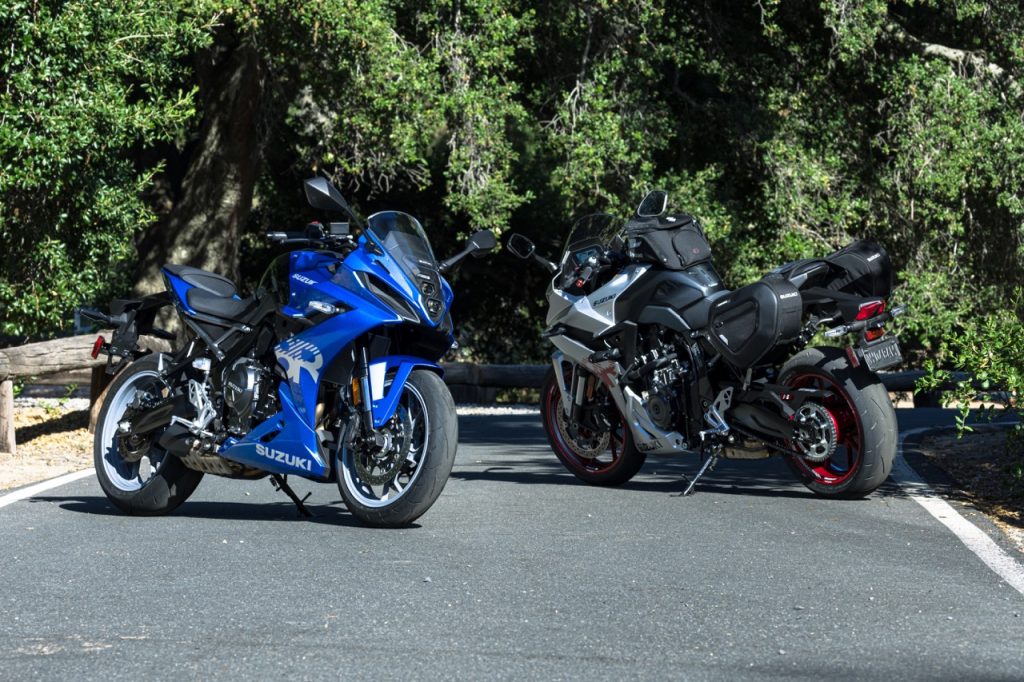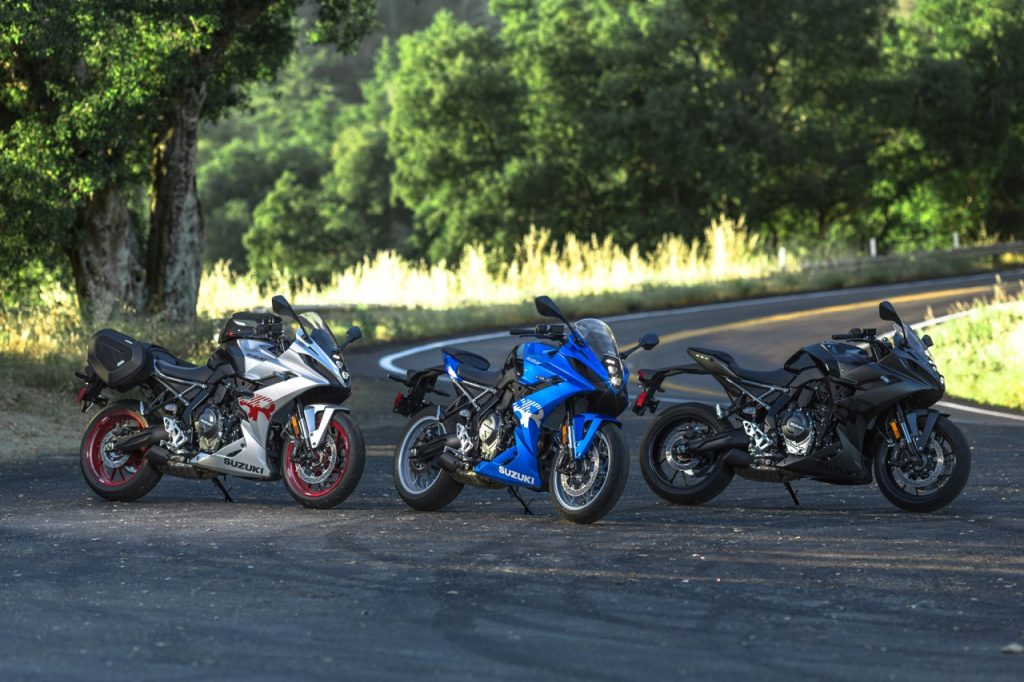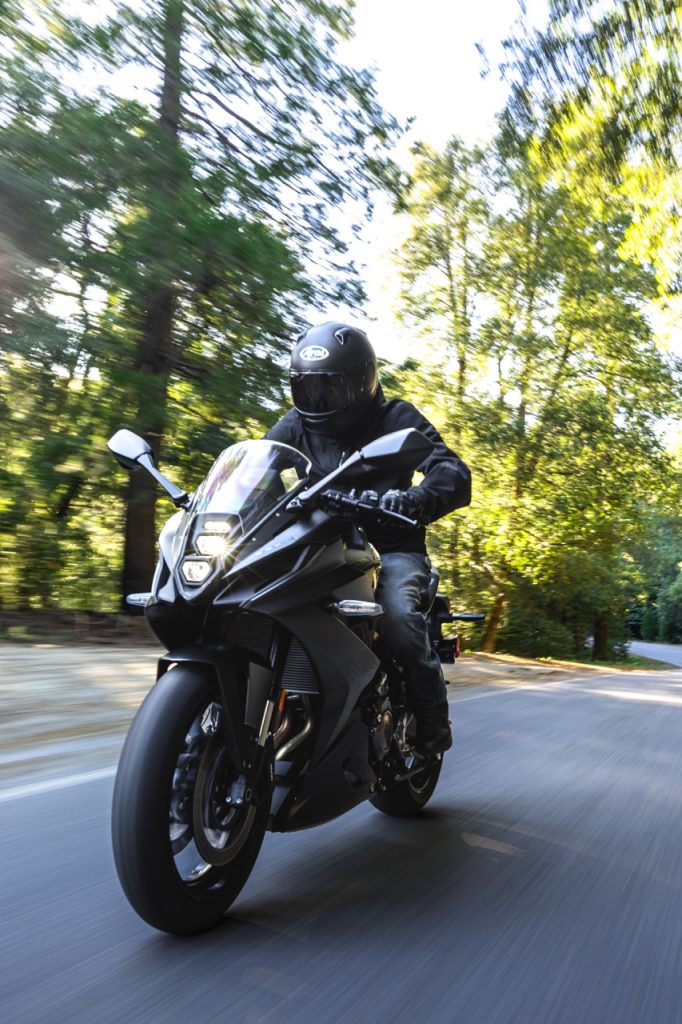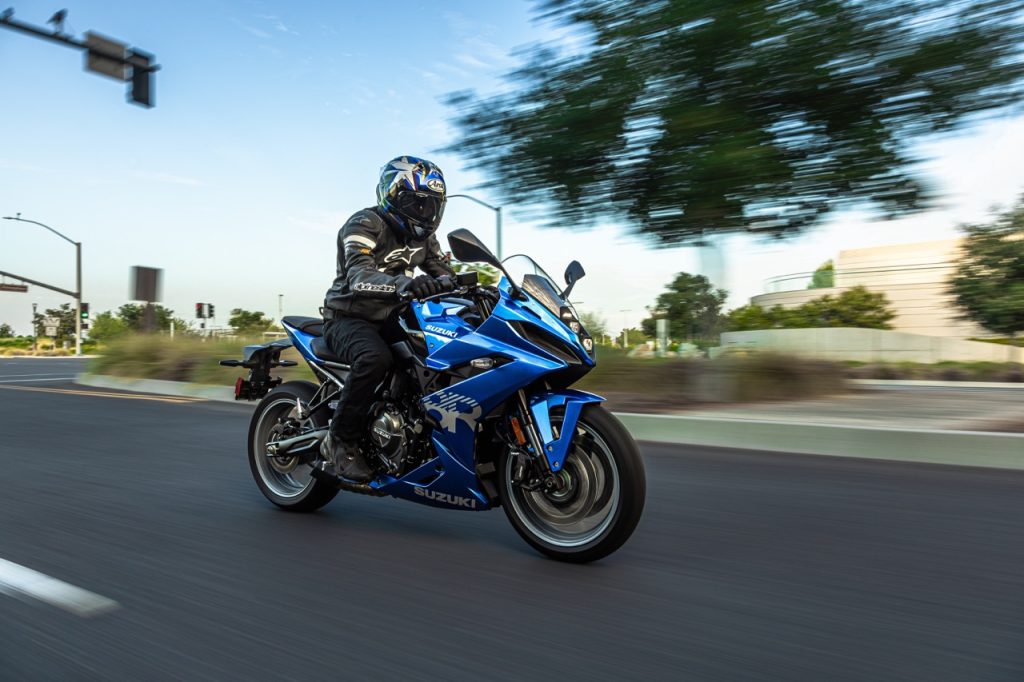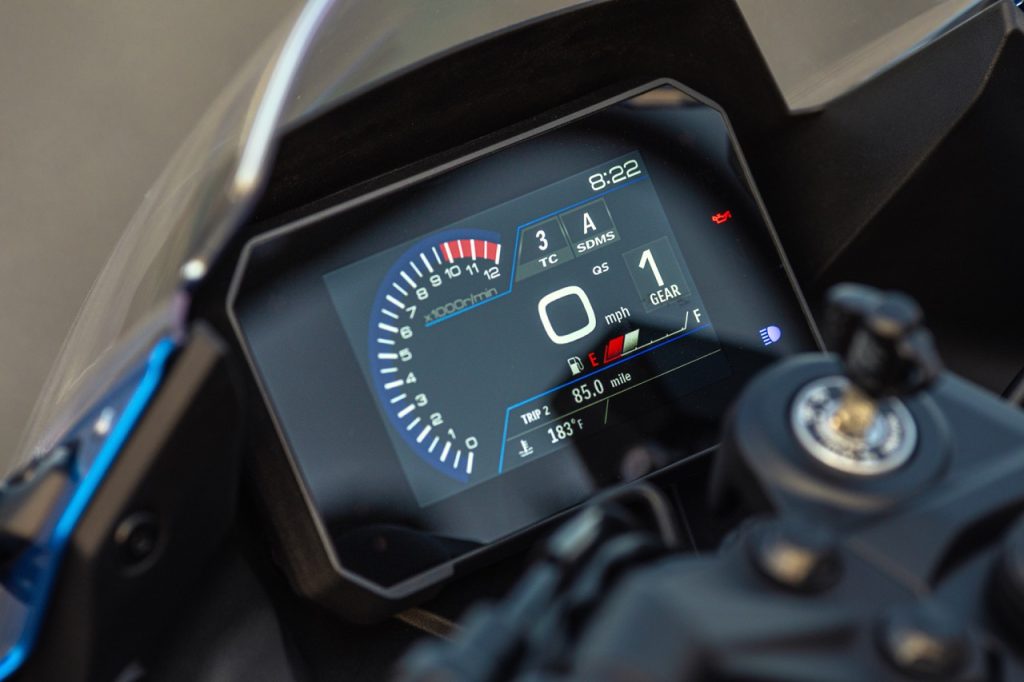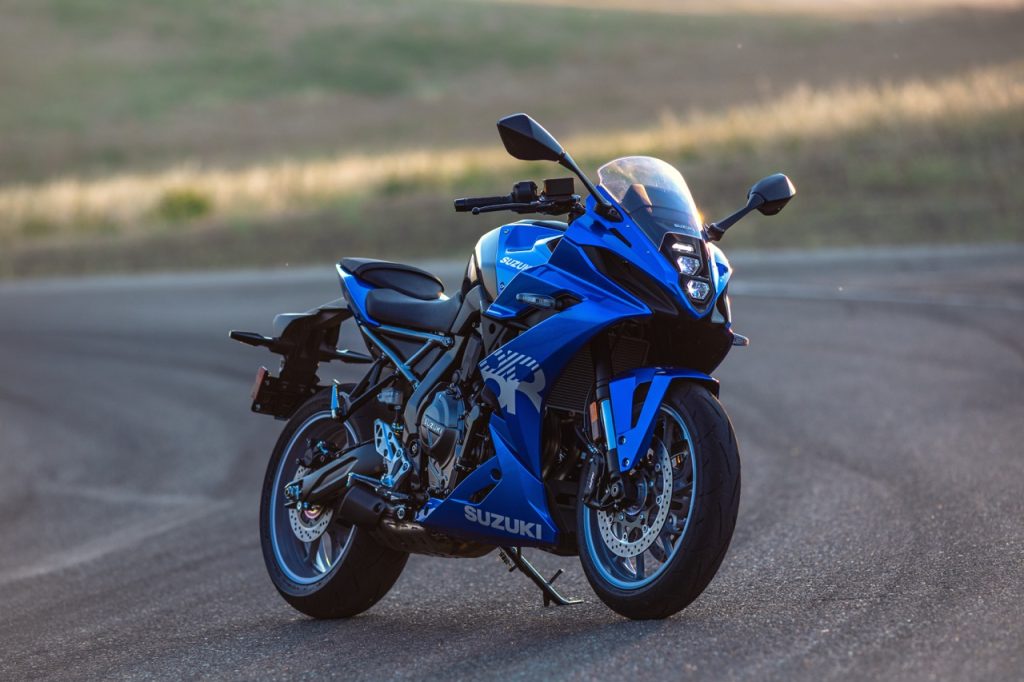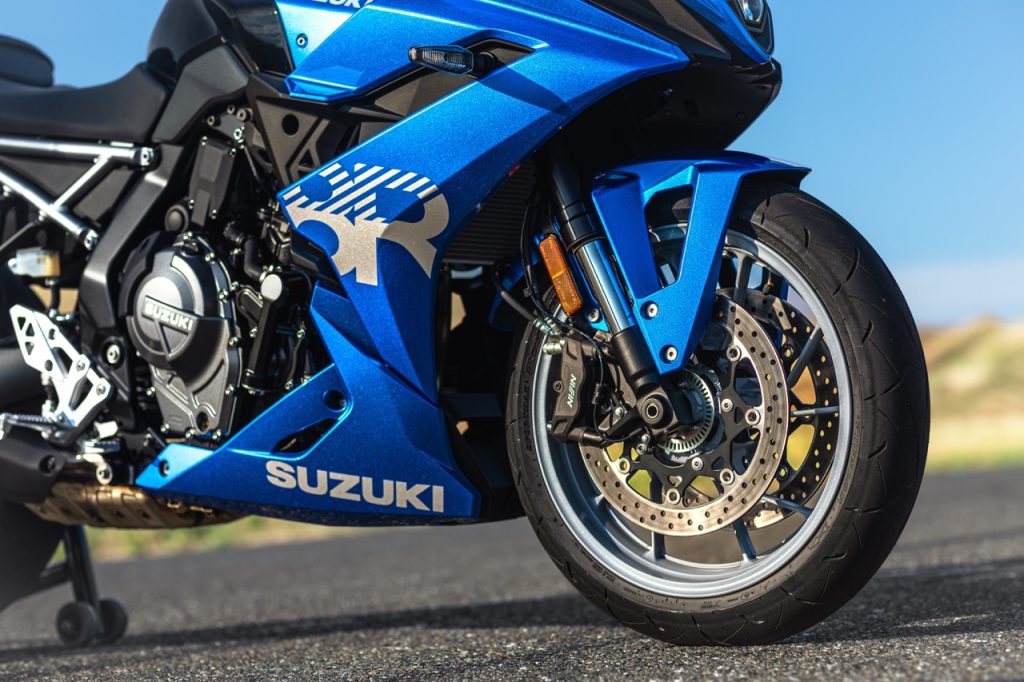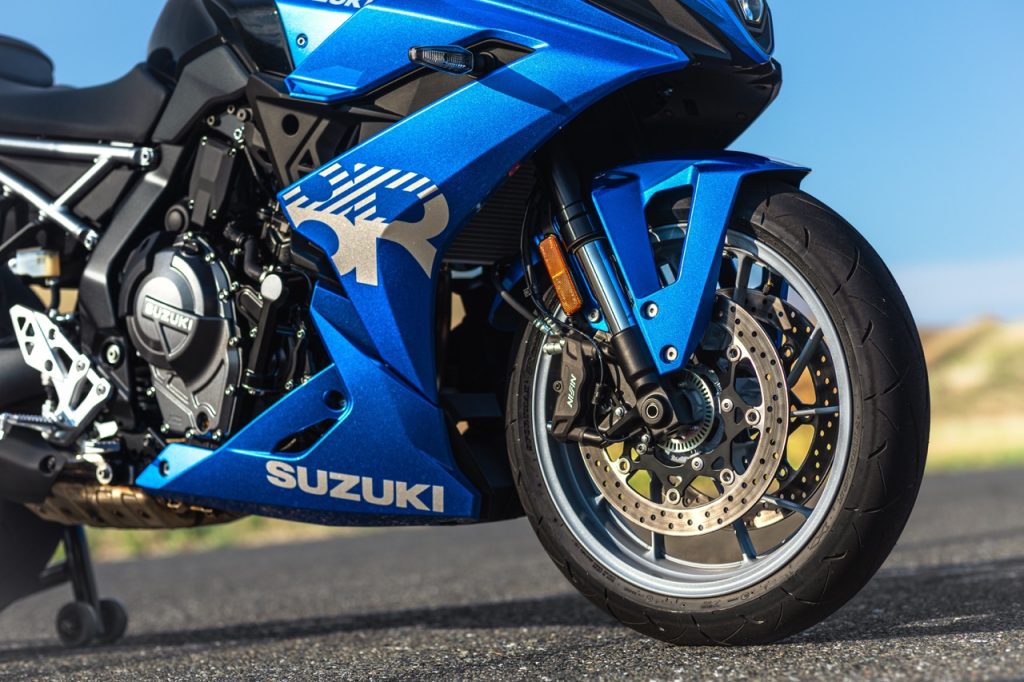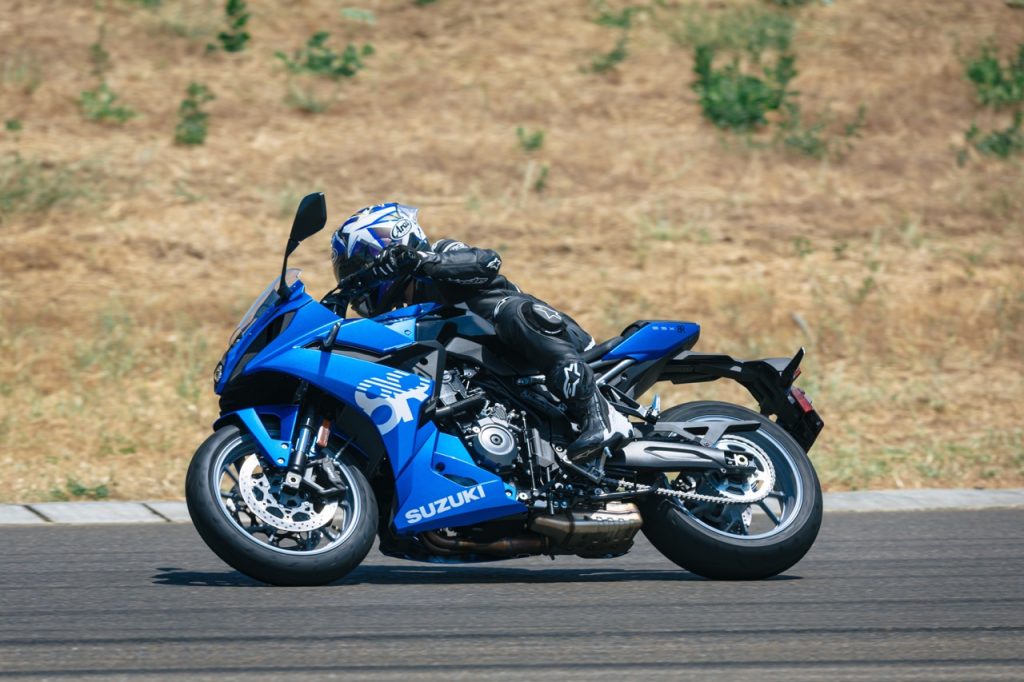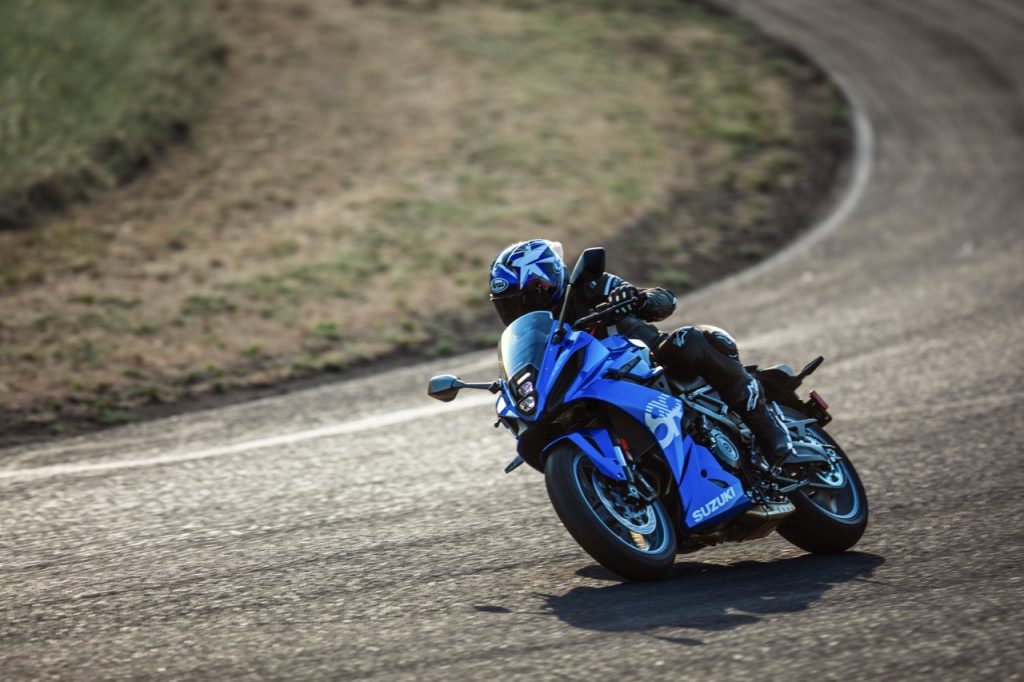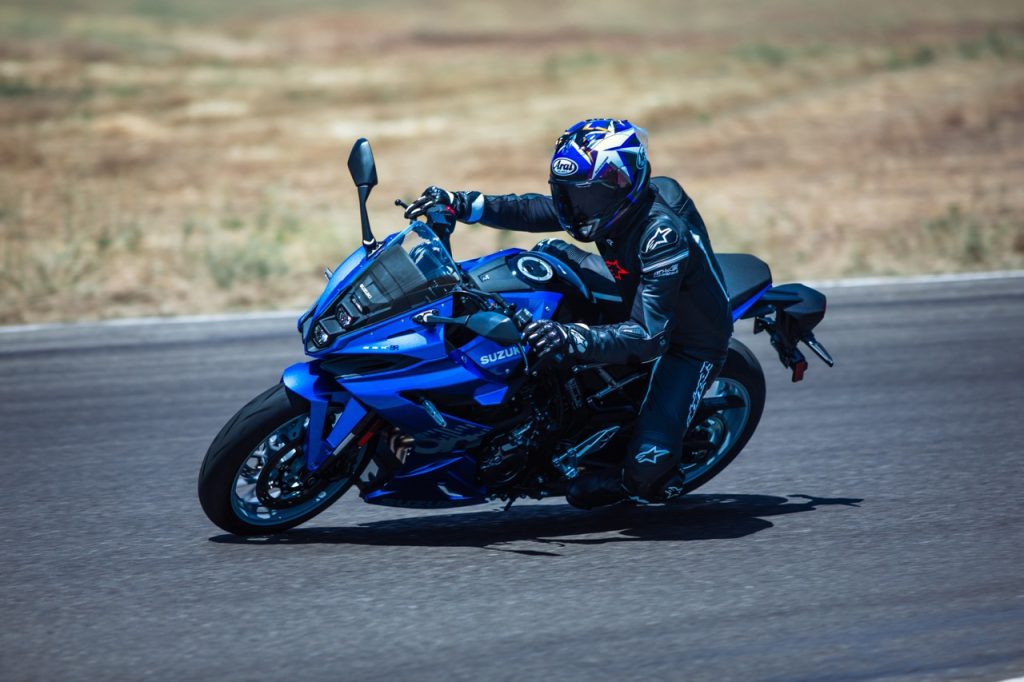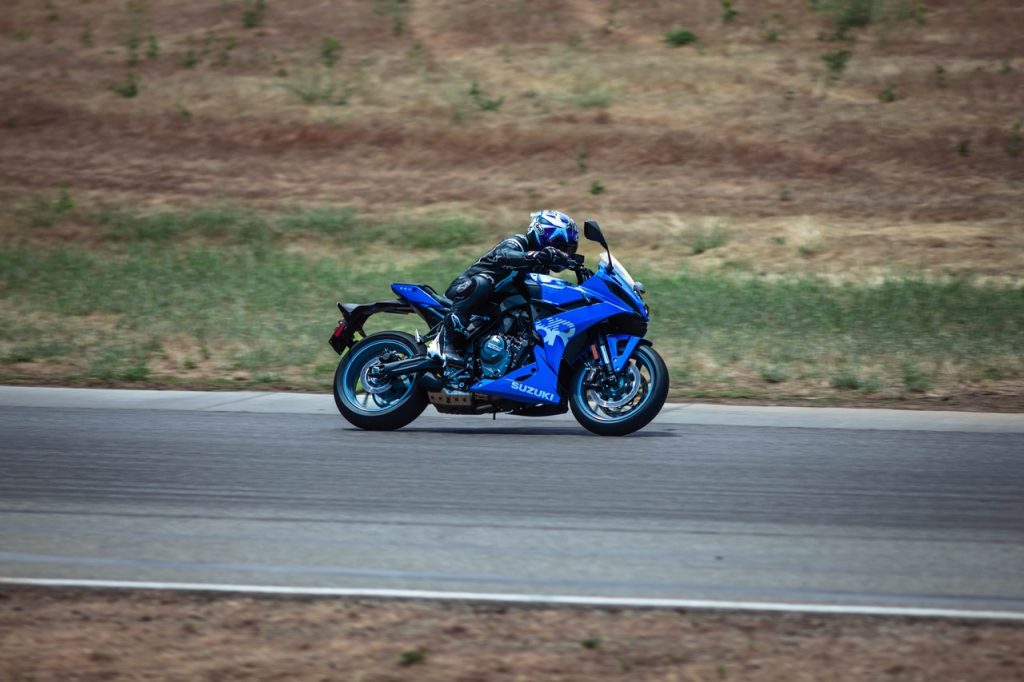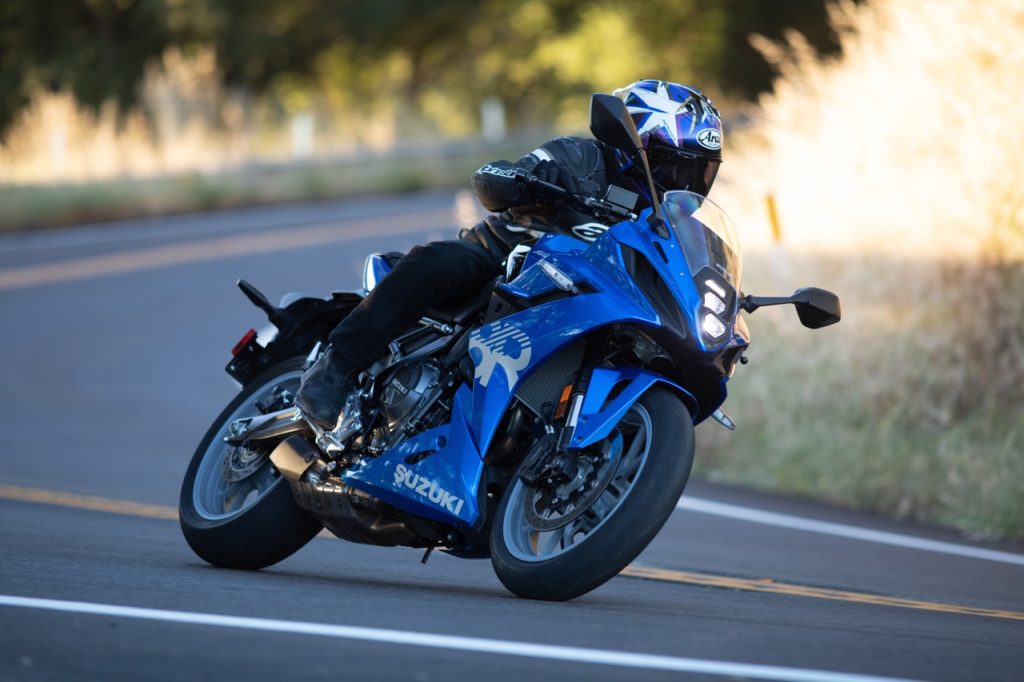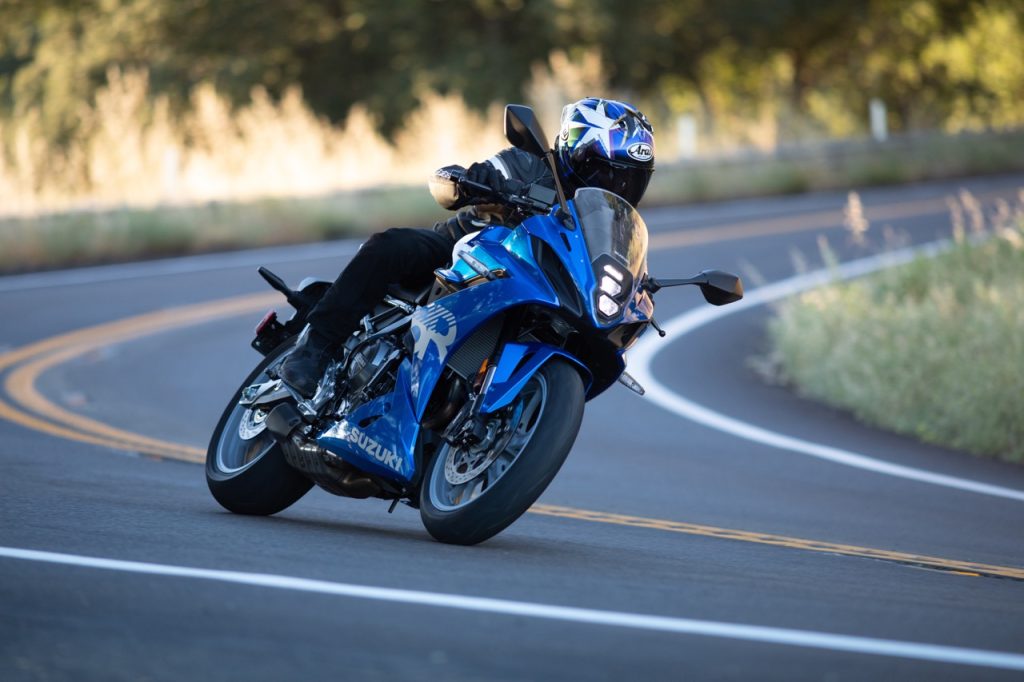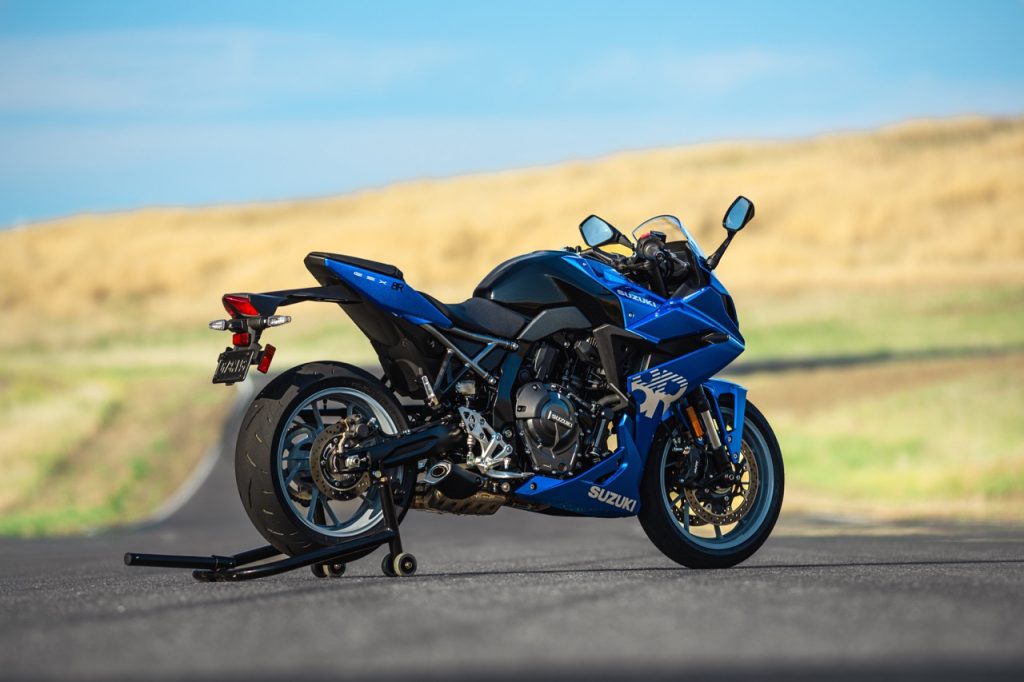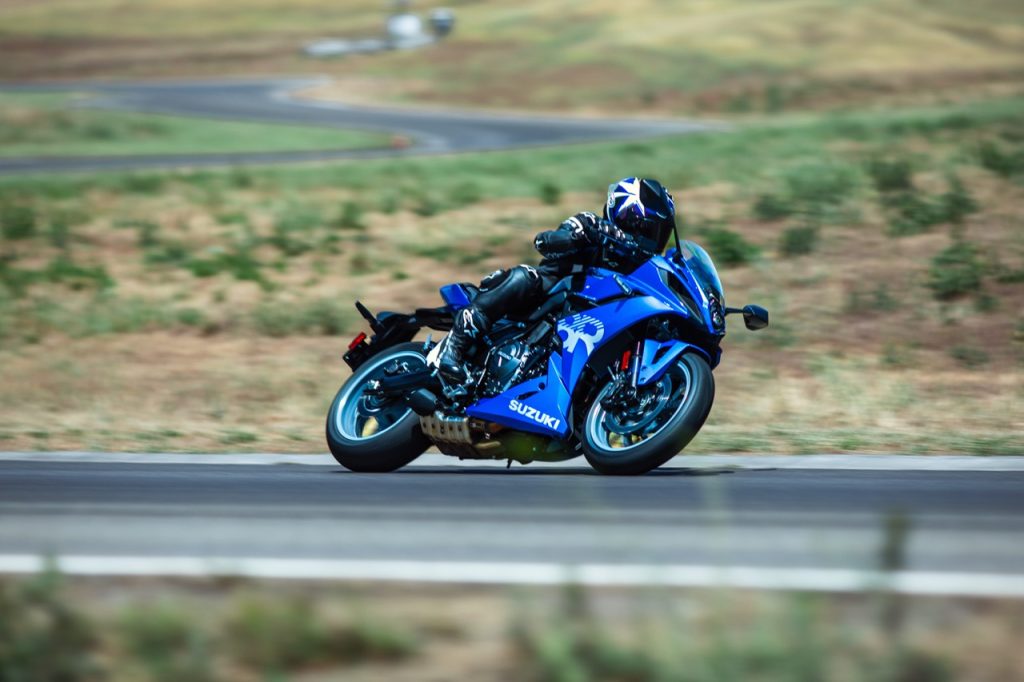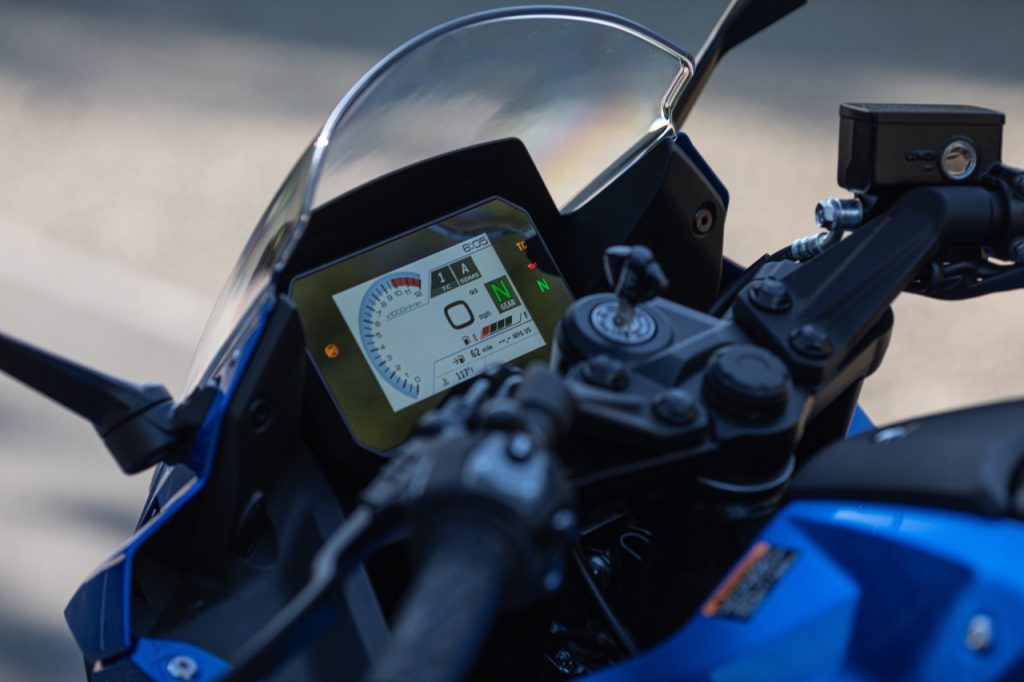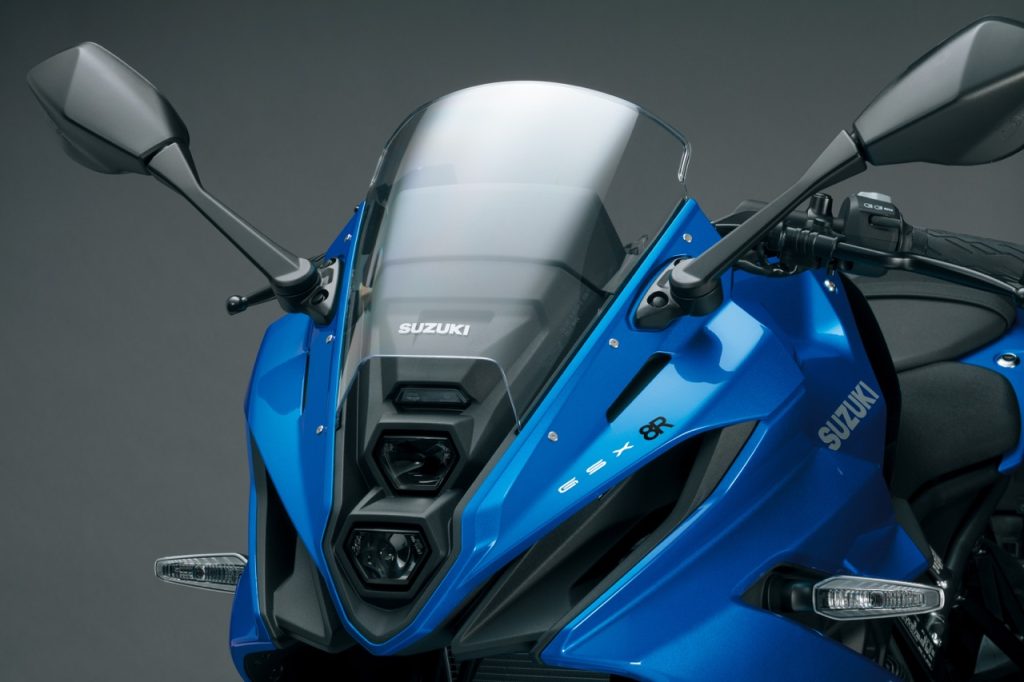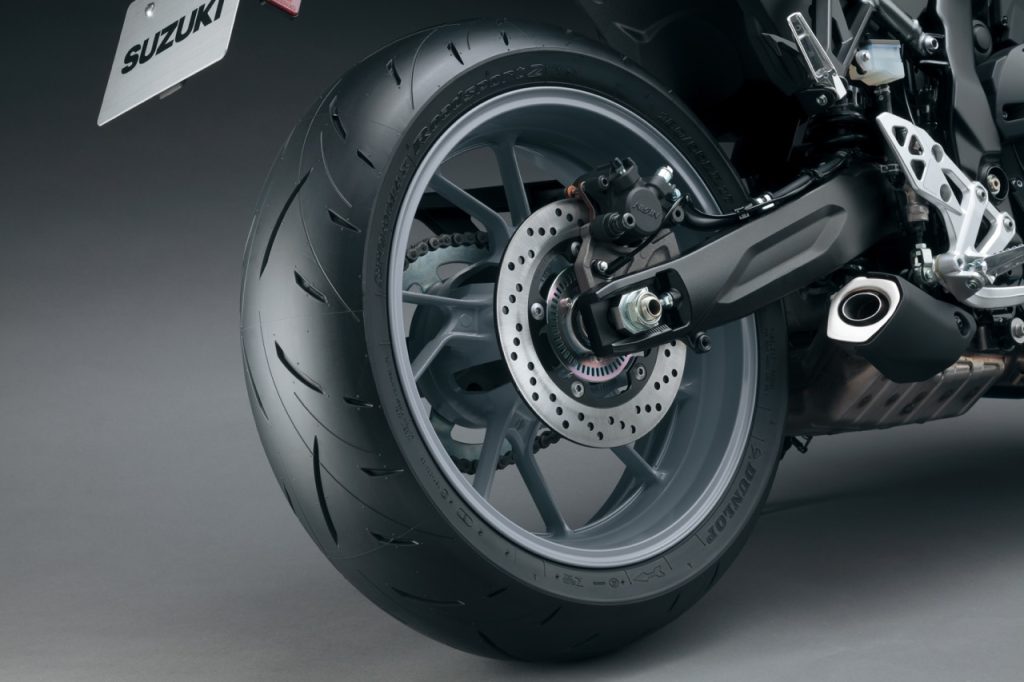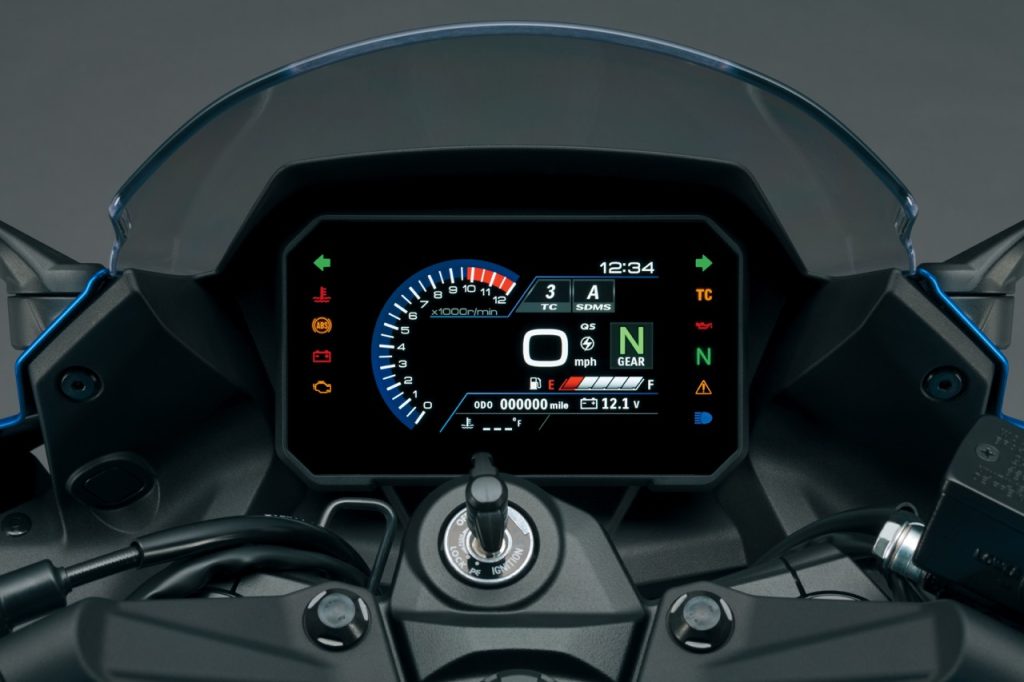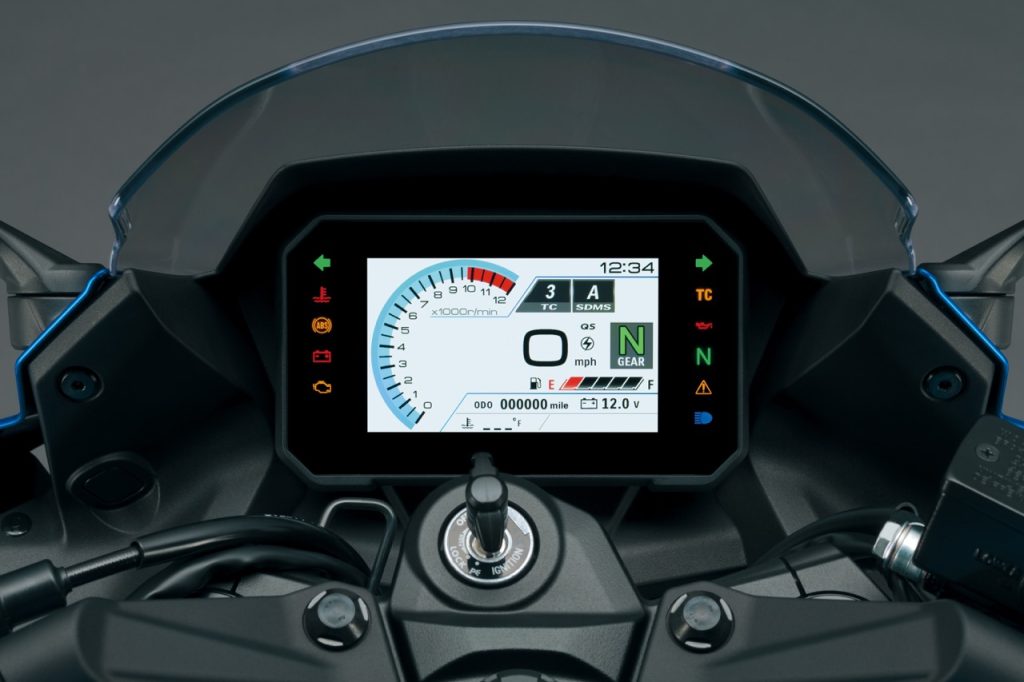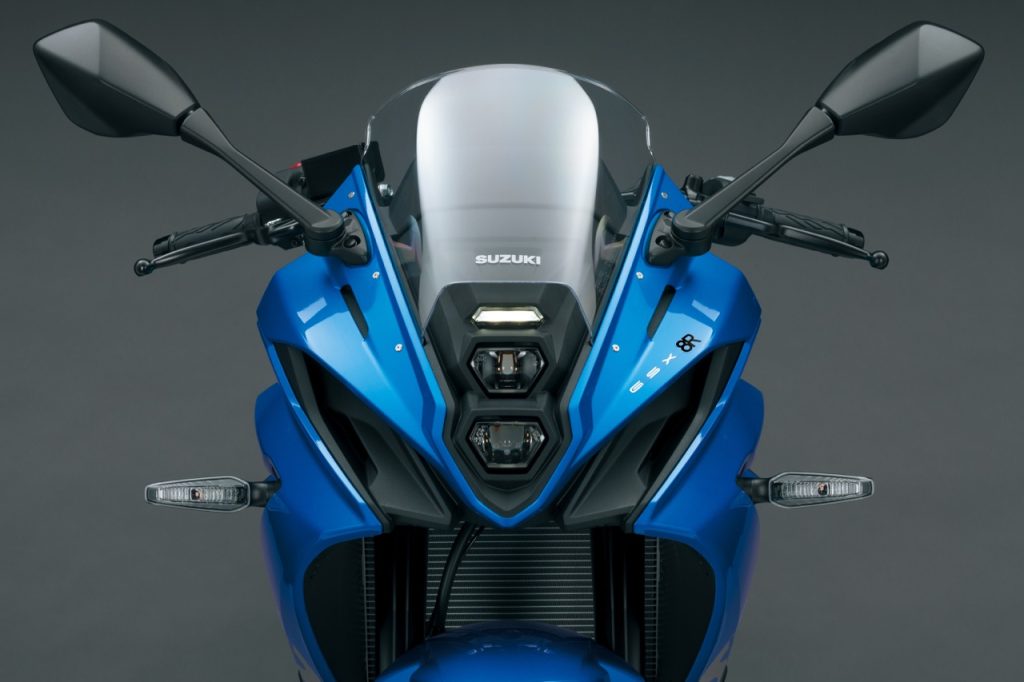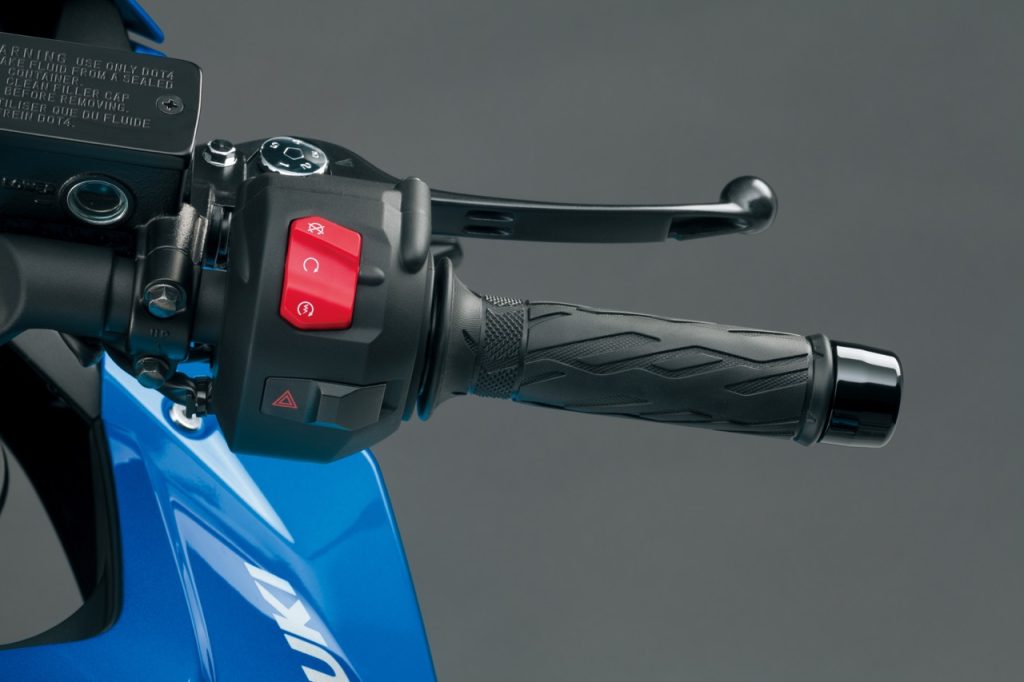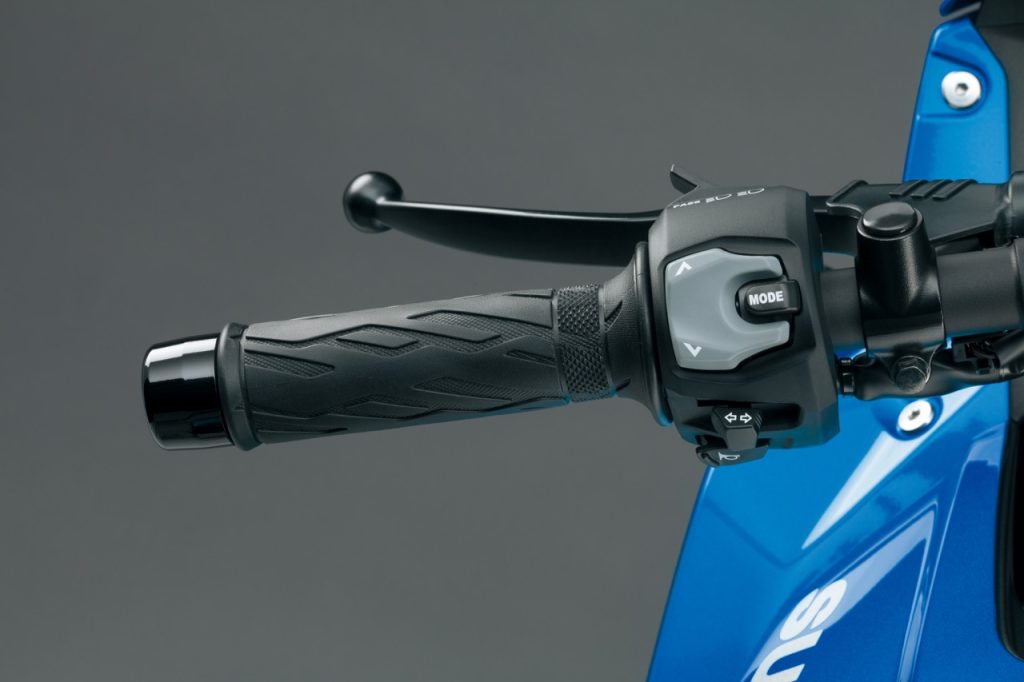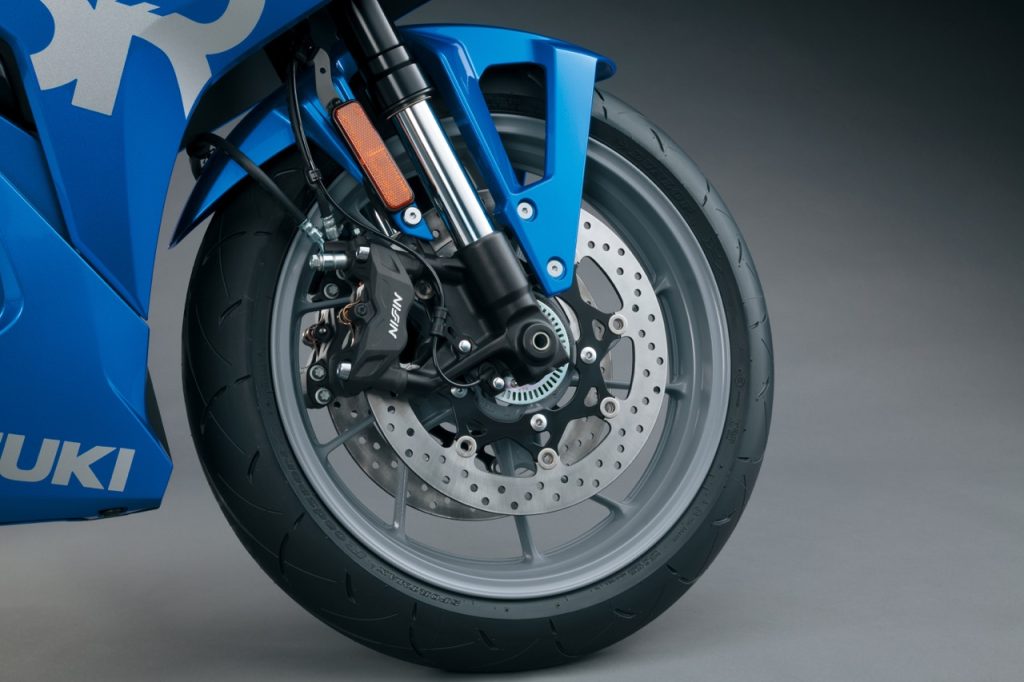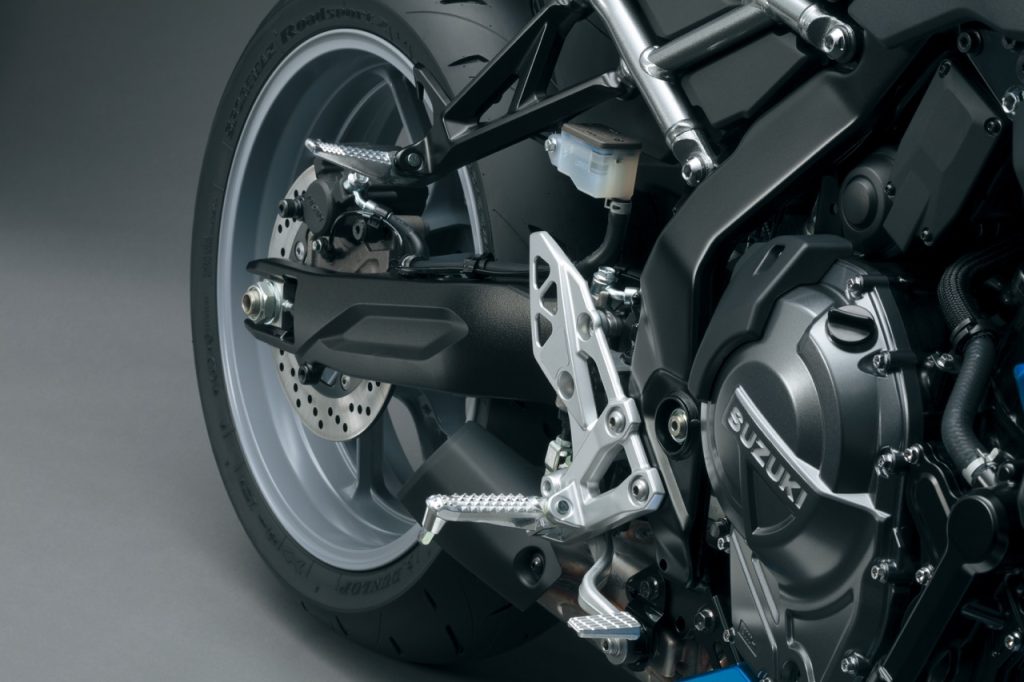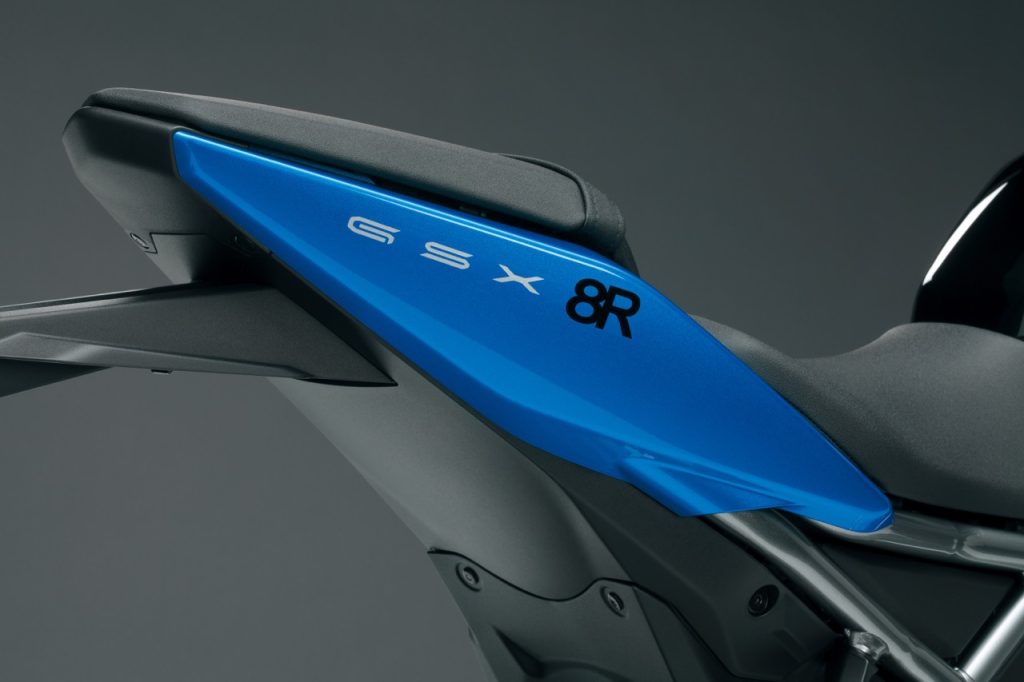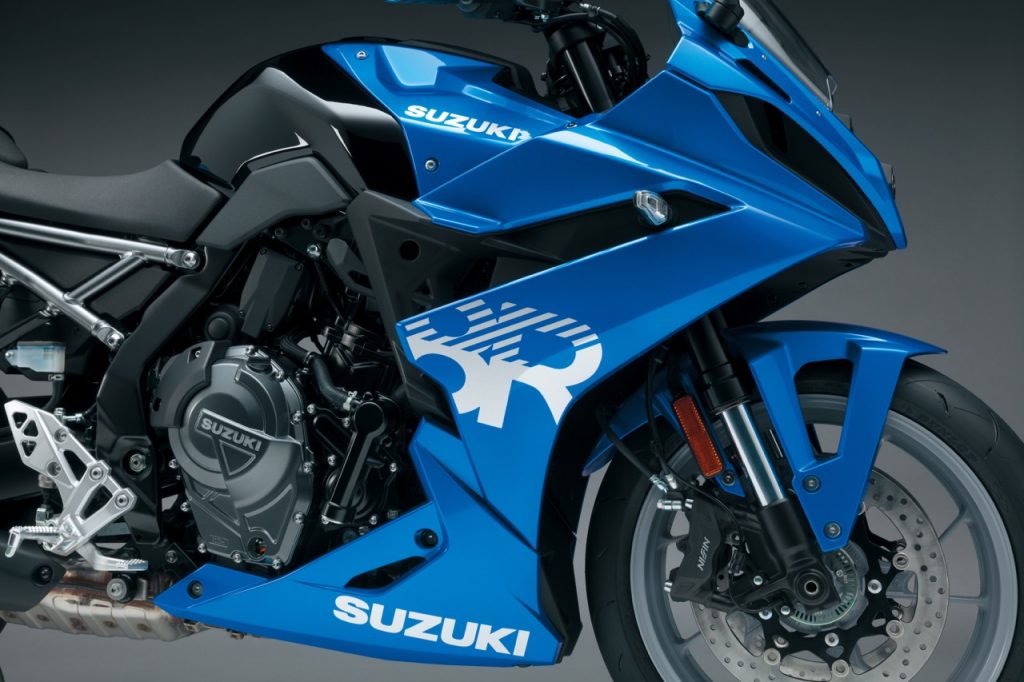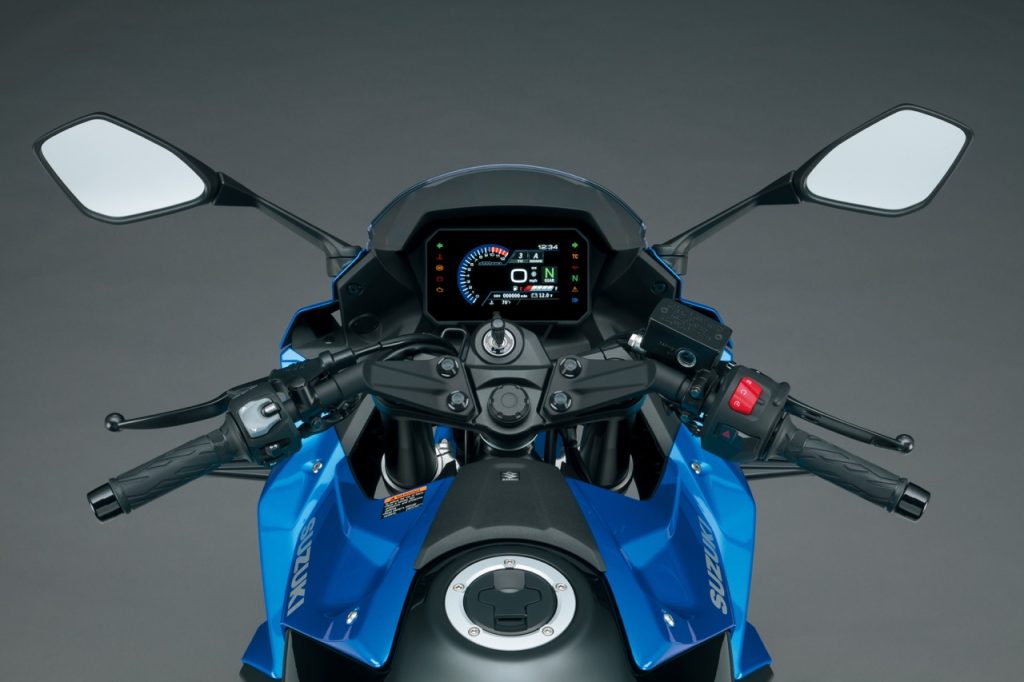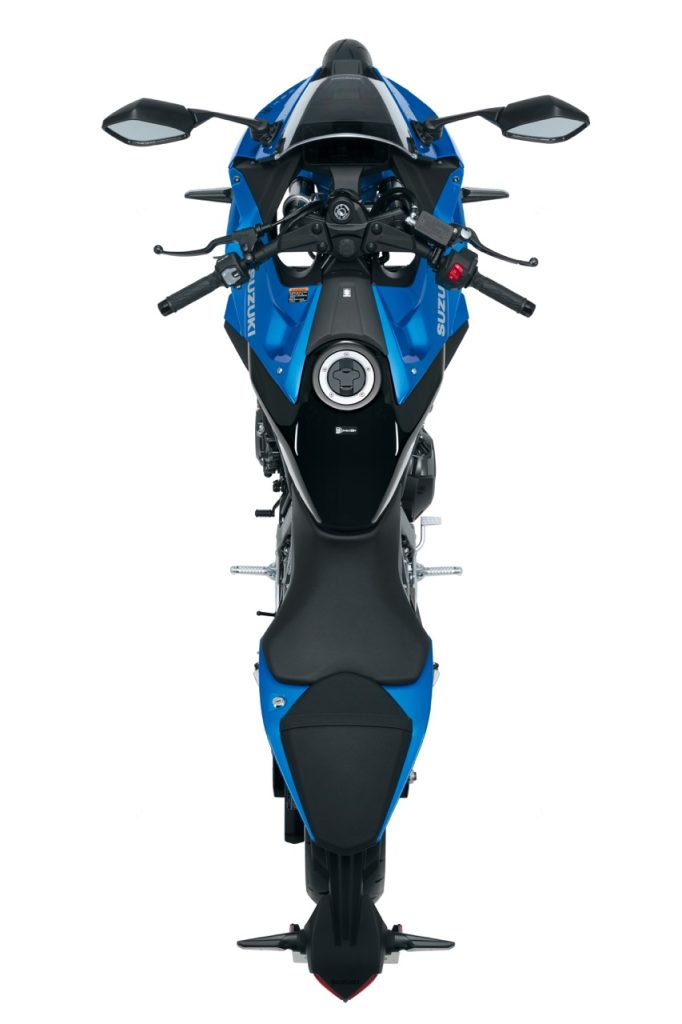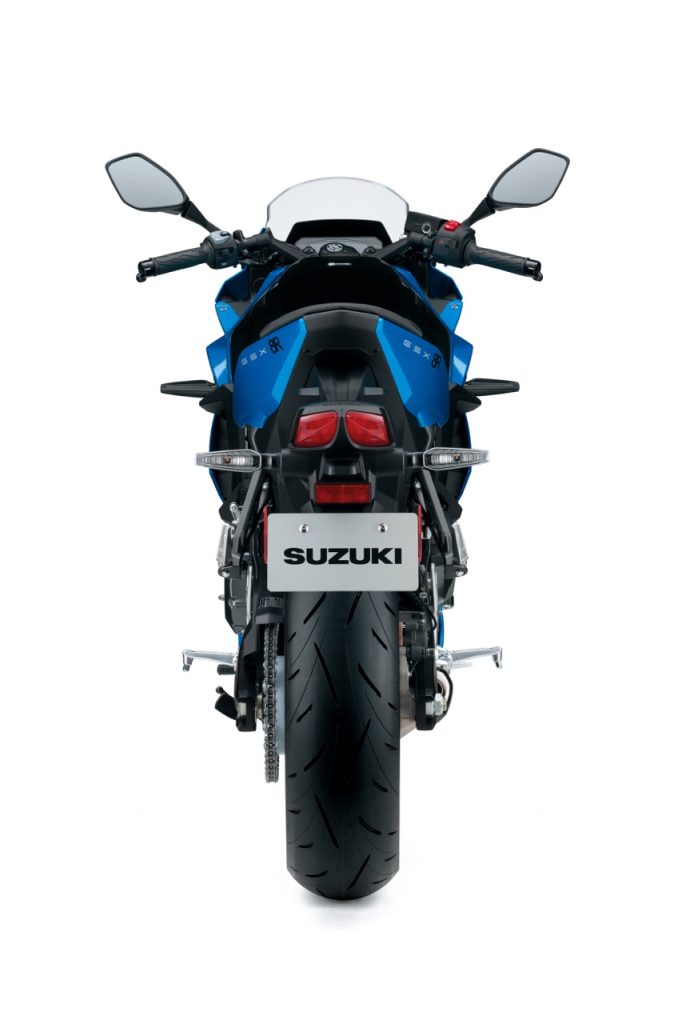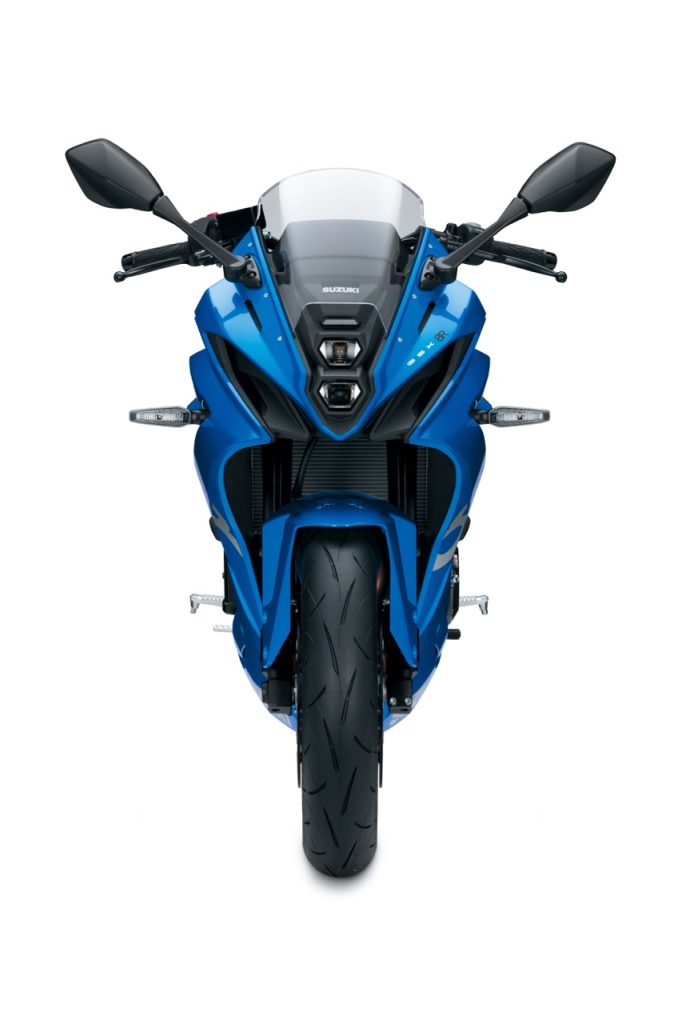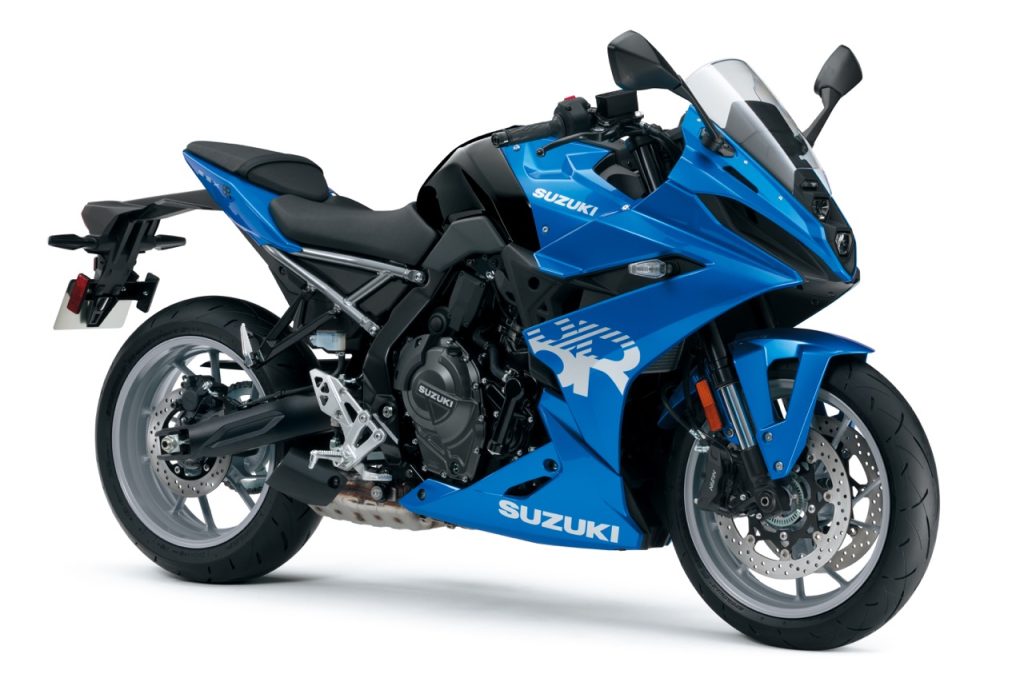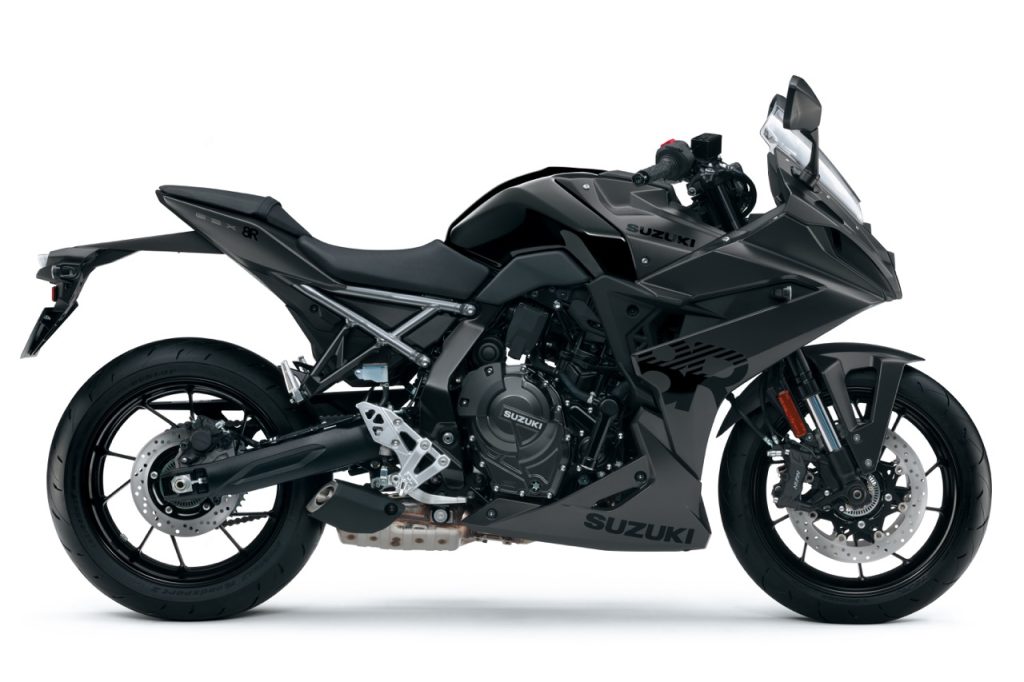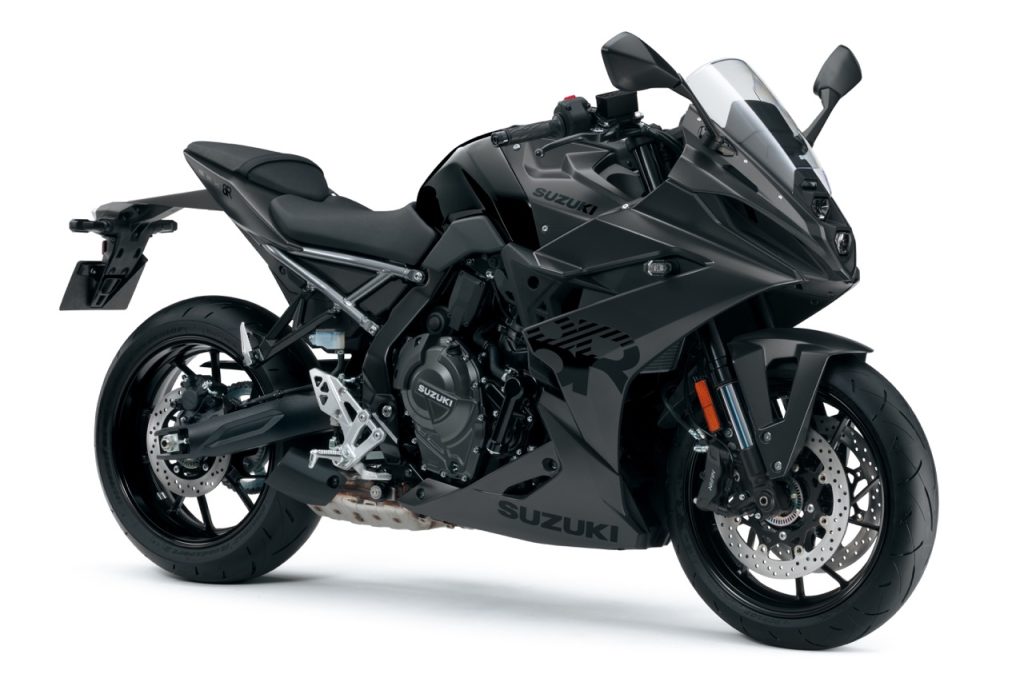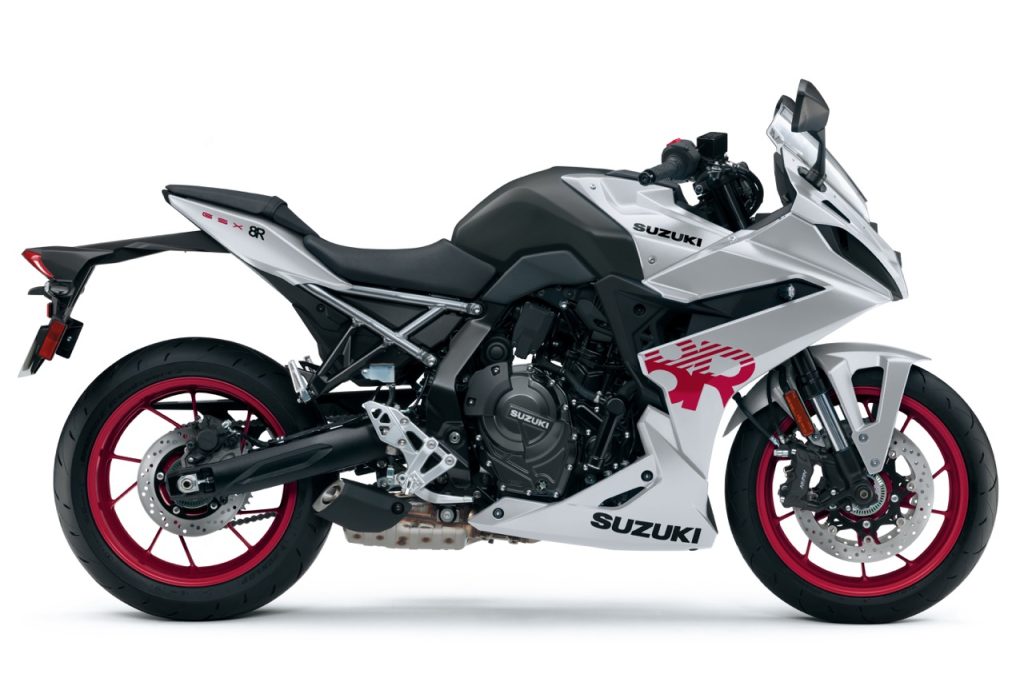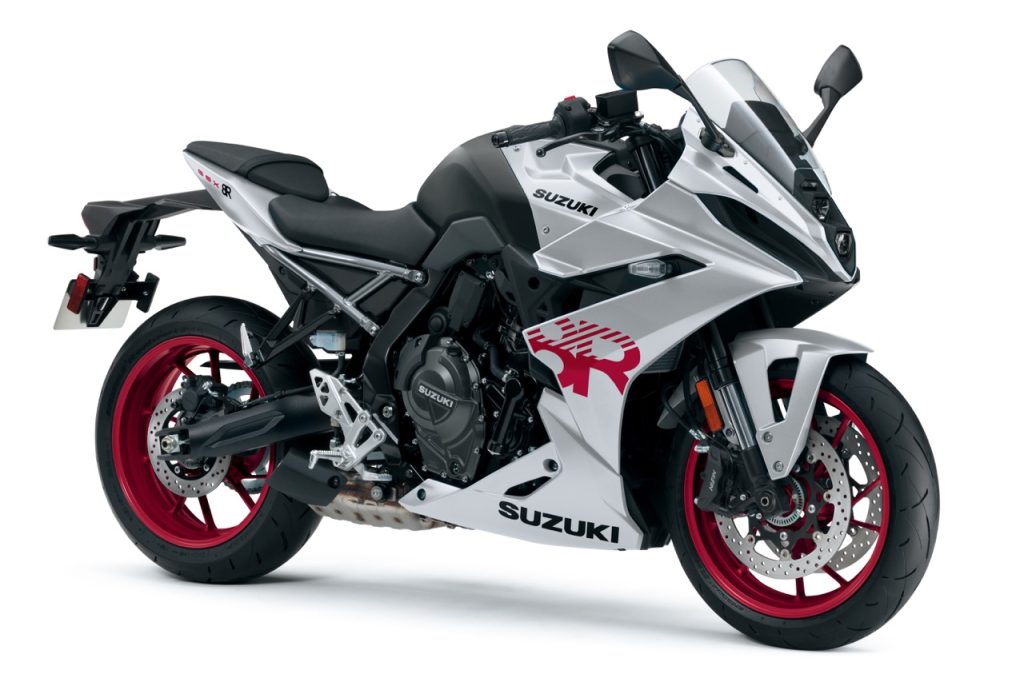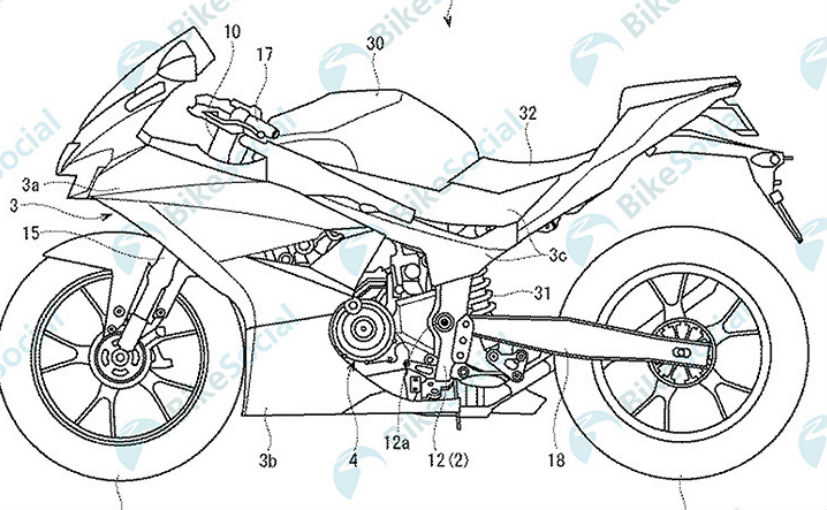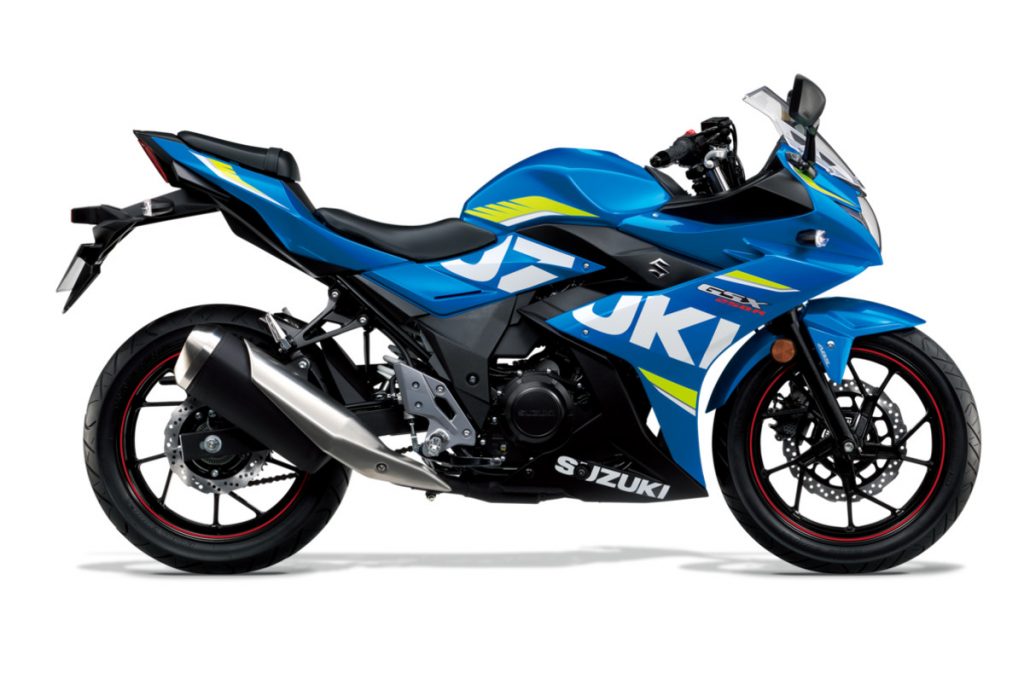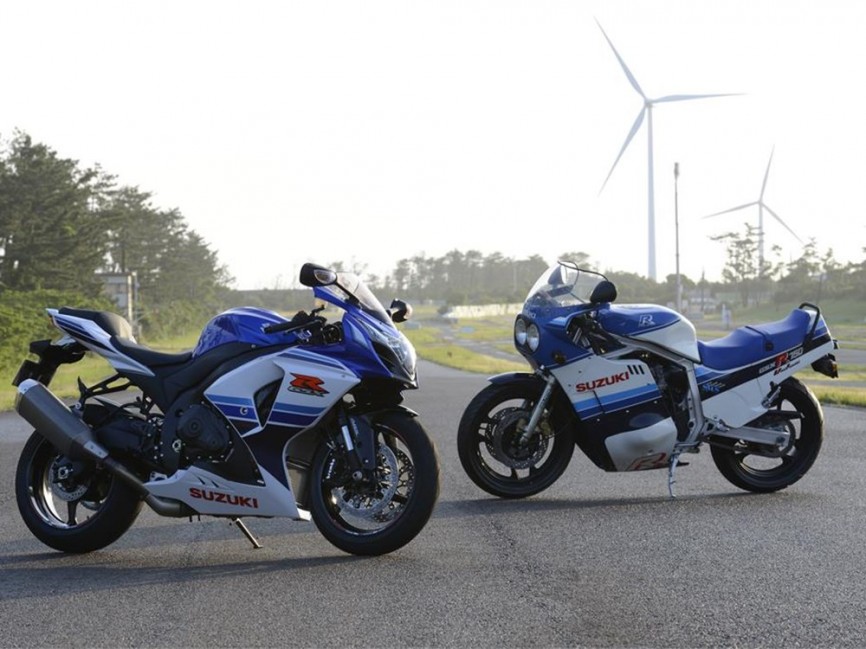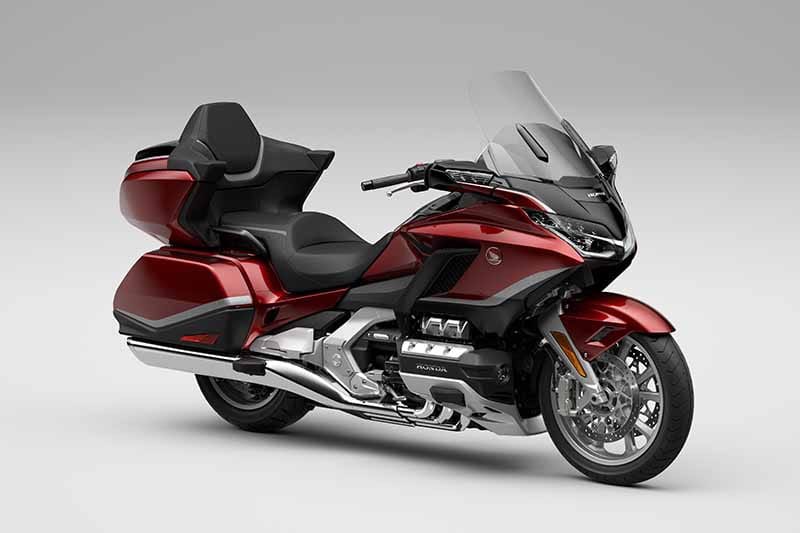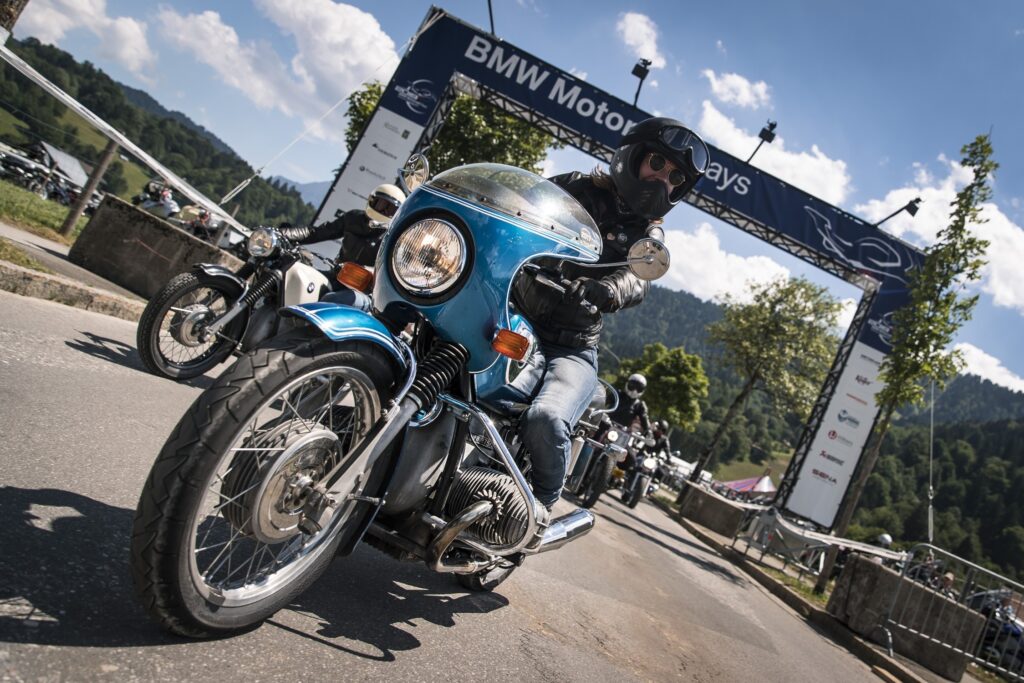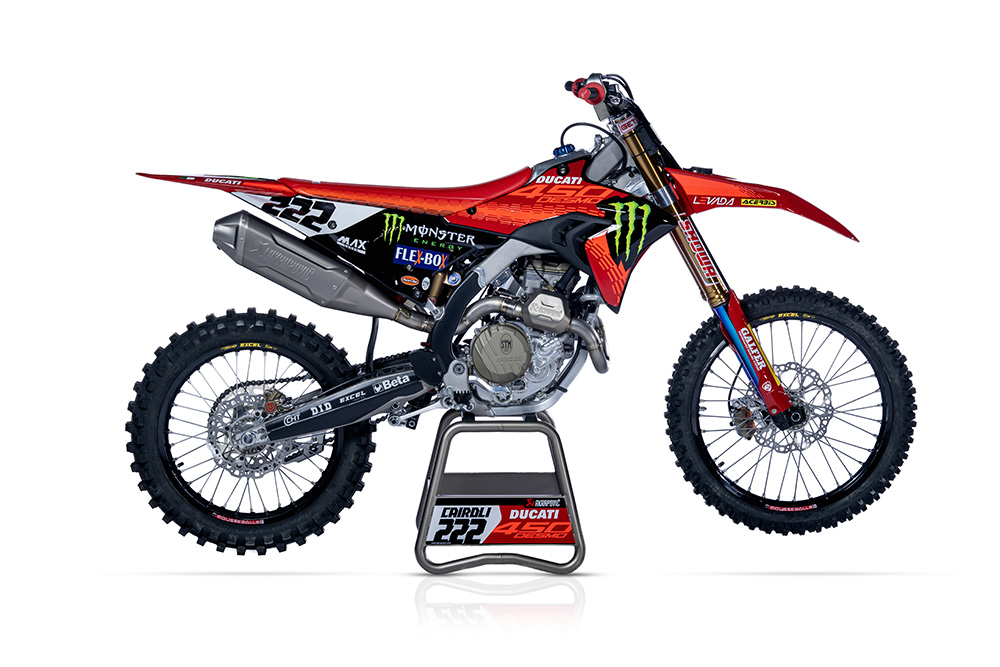Suzuki’s latest offering in the sportbike world, the GSX-8R, is a combination of style and performance. Suzuki says the new motorcycle is designed to turn heads while delivering a thrilling riding experience.
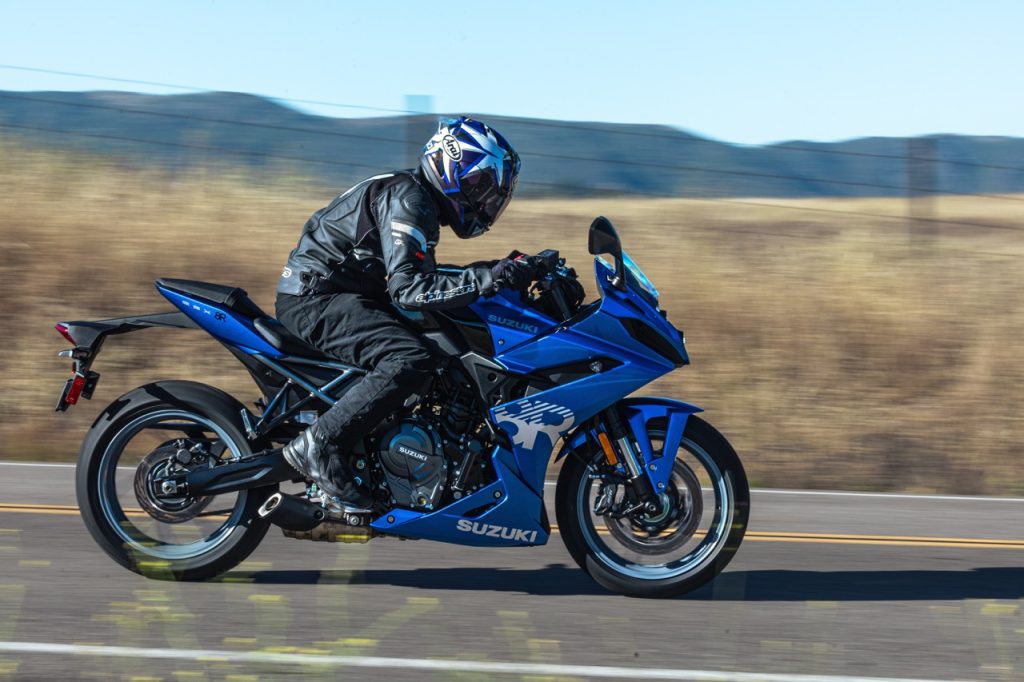
Aerodynamic Excellence
The GSX-8R offers a full fairing that has undergone wind tunnel testing to optimize aerodynamic performance and provide the rider with some weather protection. Adorned with bold 8R logos on the side panels, the fairing also incorporates mirrors designed to reduce drag.
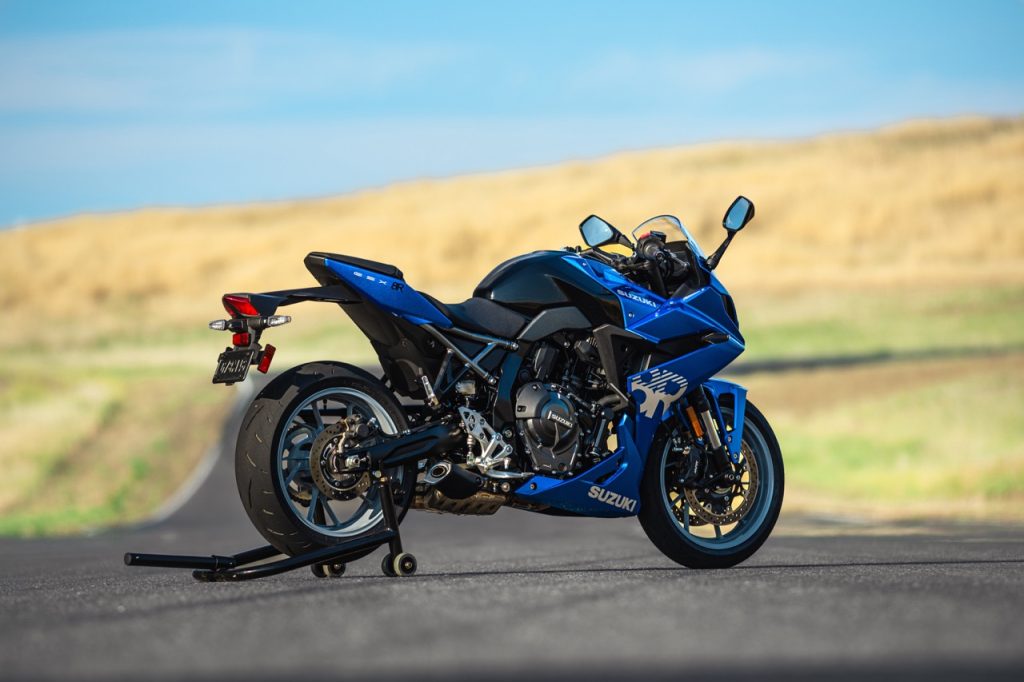
Impressive Lighting
At the front, there is the iconic stacked LED headlight, a hallmark of Suzuki’s GSX series. It’s complemented by an LED position light, ensuring clear visibility. The rear combination light and turn indicators are all equipped with LED technology.
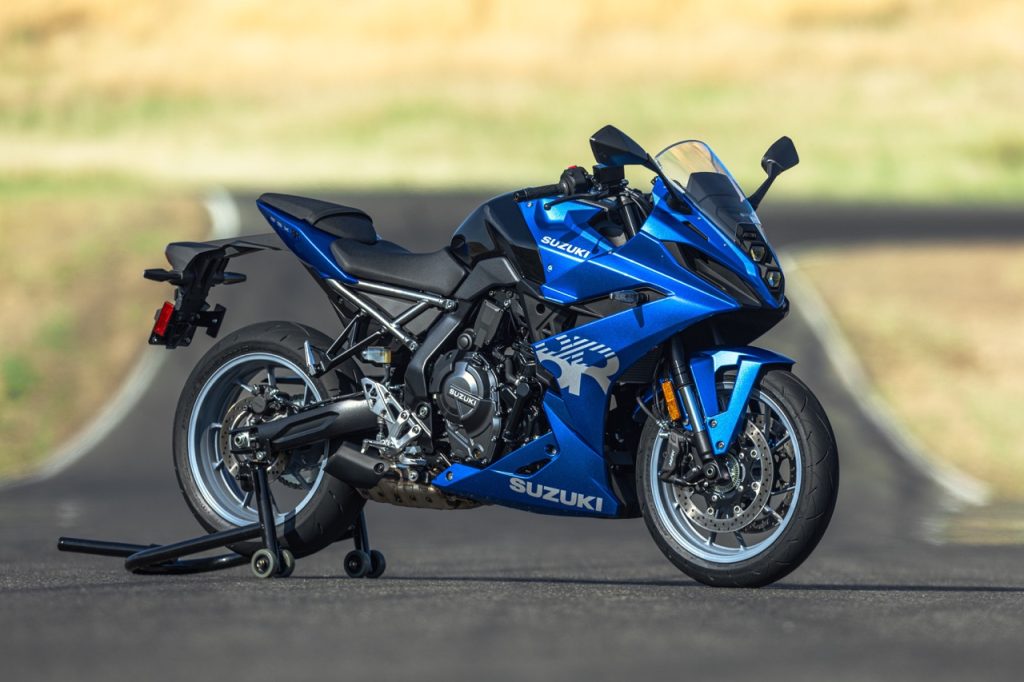
Powerful Heart
The GSX-8R is powered by a 776cc parallel twin engine, shared with the GSX-8S. Its long stroke and 270° crankshaft design is said to provide low-end torque, usability, and flexibility, while the DOHC and four valves per cylinder contribute to a free-revving nature. Peak torque is rated at 78 Nm delivered at 6800rpm and peak power of 82.9PS at 8500rpm.
The 270° crankshaft design not only offers a distinctive power delivery but is also said to produce a rumble reminiscent of Suzuki’s acclaimed V-twin models. A patented cross balancer design ensures a smooth and compact, lightweight engine.
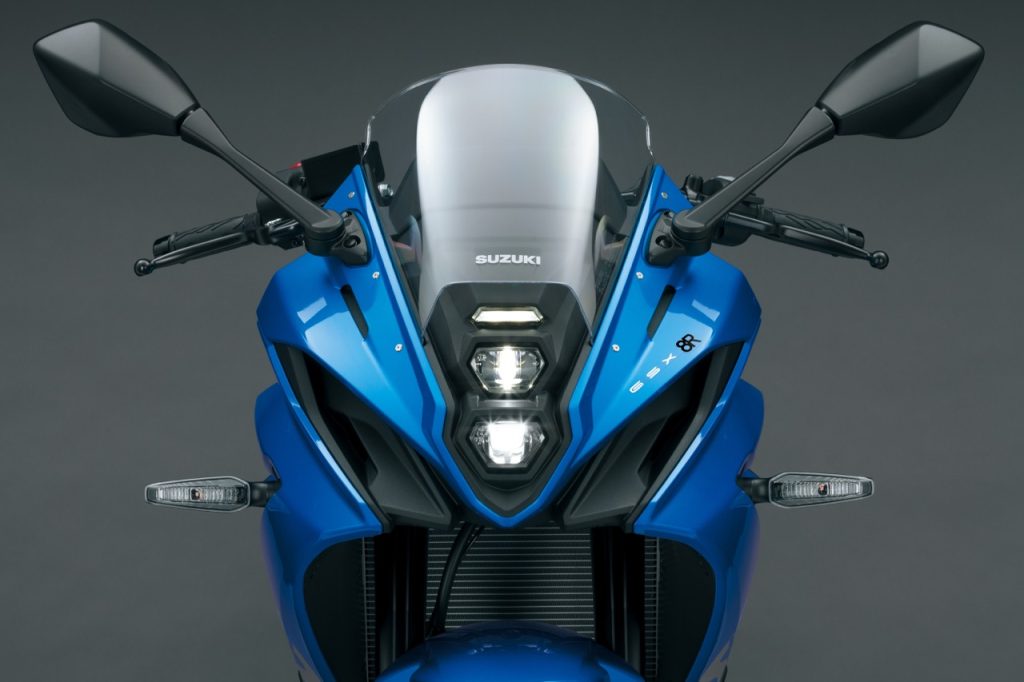
Precision Handling
A steel frame forms the core of the GSX-8R, and is supposedly engineered for precise handling characteristics. The low, forged aluminum handlebars offer a sporty riding position and direct control, shifting the rider’s weight over the front wheel. A lightweight aluminum subframe and swingarm further contribute to the bike’s agility.
Showa suspension components, including Separate Function Fork – Big Piston inverted forks and a monoshock in the rear, ensure responsive handling. Nissin four-piston calipers grip 310mm discs, providing confident stopping power. The GSX-8R is fitted with Dunlop Roadsport 2 tires.
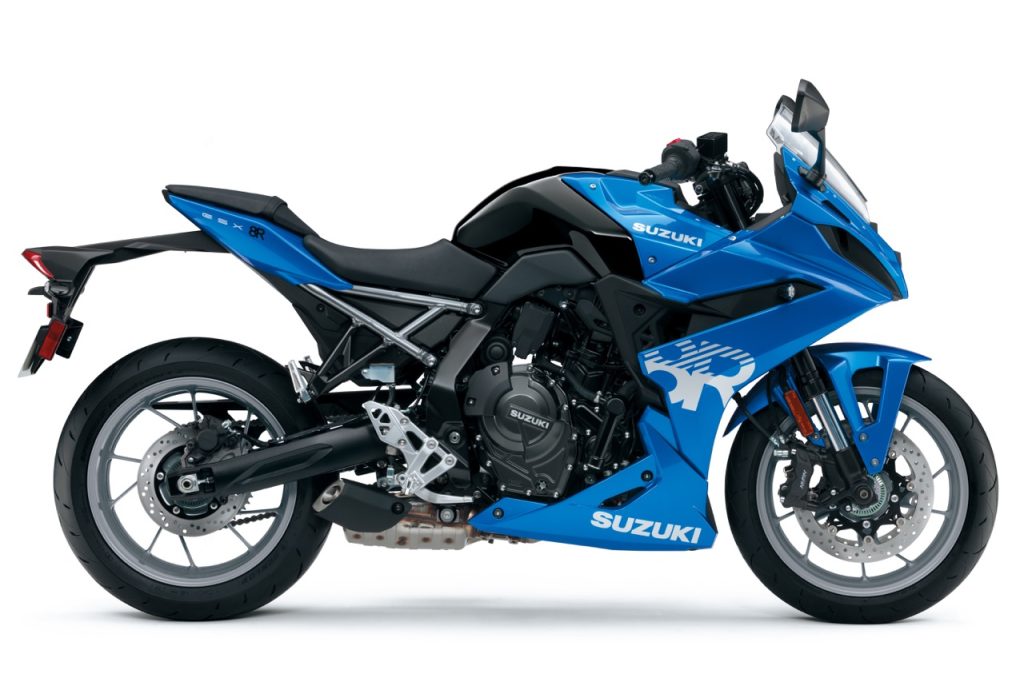
Advanced Electronics
Enhancing rideability and usability, the GSX-8R boasts a suite of electronic systems. These include a bi-directional quickshifter as standard, three selectable engine power modes, three traction control settings, and the option to disengage the system entirely. Suzuki’s low RPM assist and easy-start function further simplify the riding experience. All these settings are easily accessible through a single rocker switch on the left-hand handlebar, displayed on a vibrant 5″ TFT screen.
